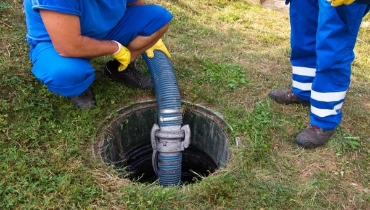Stillwell Septic And Grading Fundamentals Explained
Stillwell Septic And Grading Fundamentals Explained
Blog Article
More About Stillwell Septic And Grading
Table of ContentsUnknown Facts About Stillwell Septic And GradingIndicators on Stillwell Septic And Grading You Need To KnowStillwell Septic And Grading - QuestionsOur Stillwell Septic And Grading PDFsLittle Known Questions About Stillwell Septic And Grading.The Best Strategy To Use For Stillwell Septic And GradingThe Only Guide for Stillwell Septic And Grading
On the whole, septic system installment is an intricate process that needs cautious preparation and implementation. House owners ought to collaborate with a reputable setup group and be aware of regional guidelines and demands to make sure that their septic tank works properly for several years to find. After the septic system has been set up and linked to the drain field, it is time to backfill the area.The backfill material should be without clods, big rocks, frozen issue, and particles that can result in voids in the backfill that might allow clearing up gradually. Squashed rock or pea gravel 1/2-inch in size is liked if indigenous materials are not ideal. As soon as the backfilling is complete, it is time to landscape the area.
When the septic system has been set up, it is critical to check it to make sure that it is working correctly (Stillwell Septic). https://medium.com/@georgebraden29910/about. Examining the system entails looking for leakages, guaranteeing that the storage tank goes to the proper degree, and taking a look at the drain field. Among one of the most usual examinations executed is the hydraulic load examination
Everything about Stillwell Septic And Grading
The water is after that checked to ensure that it streams appropriately with the pipelines and into the drain field. If the water does not move correctly or backs up into the storage tank, it may show an issue with the system. Another examination that is typically executed is the color examination.
The dye is then kept track of to ensure that it flows properly via the pipes and right into the drain field. If the dye does not flow appropriately or appears in the wrong area, it might indicate an issue with the system. It is crucial to have a specialist execute these tests to ensure that they are done appropriately.

The Stillwell Septic And Grading Statements
Right here are some important ideas for property owners to preserve their septic tank: The average family septic tank need to be inspected at the very least every three years by a septic solution specialist. The frequency of pumping relies on the size of the container and the number of people utilizing it. https://georgebraden29910.wixsite.com/stillwell-septic-and/post/ensuring-smooth-flow-your-go-to-guide-for-septic-inspection-repairs-and-pumping. A basic general rule is to pump the storage tank every three to five years
Using water-efficient components and appliances, such as low-flow showerheads and commodes, can minimize water usage and help the septic system work much more successfully. Only flush bathroom tissue and human waste down the bathroom. Prevent purging anything else, consisting of womanly health items, child wipes, and food preparation oil, as they can clog the system.
The Facts About Stillwell Septic And Grading Uncovered
Sewage-disposal tank installment is a complicated procedure that needs careful planning and execution. Property owners have to be aware of the essential actions involved in the installment procedure to make sure that their septic system operates appropriately and effectively. The initial step is to examine the website where the septic system will certainly be set up.
Once the site has been assessed, the next step is to prepare for the installment. Property owners have to make sure that their service provider is experienced in septic tank installation and will function check my source together with them throughout the process.
Facts About Stillwell Septic And Grading Revealed

Home owners must recognize the essential steps included in the installation process to make sure that their septic tank functions correctly and successfully. By adhering to these steps and keeping their system, house owners can feel confident that their septic system will certainly give dependable wastewater therapy for several years to come.
Nearly one in 5 united state homes have septic systems. Yours may be one of them. If you're not correctly preserving your septic tank, you're not just harming the setting, you're placing your household's health at riskand may be purging thousands of bucks down the drainpipe! Do Your Component, Be SepticSmart: The Do's and Do n'ts of Your Septic System.
Some Known Details About Stillwell Septic And Grading

All that added water can actually strain your septic system. This can be useful particularly if your system has actually not been pumped in a lengthy time.
The Only Guide to Stillwell Septic And Grading
Know your system's place. When you have the container pumped, draw a diagram or map showing its area in connection to repaired factors - corners of the house, steps, or fence blog posts.
Lower the amount of wastewater that should be dealt with and disposed of by your system: Clean no more than one or 2 loads of clothing daily. Up to 53 gallons of water flooding your septic system with each lots, so it's ideal to spread out laundry out over the week.
Report this page